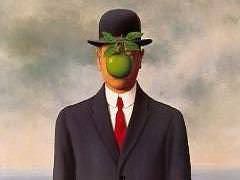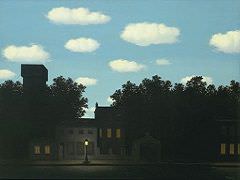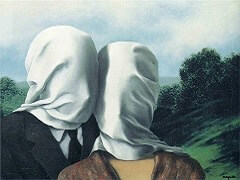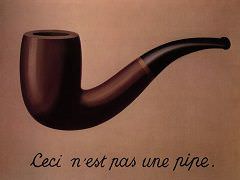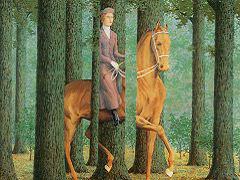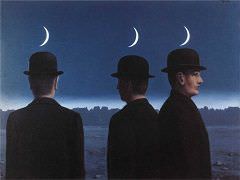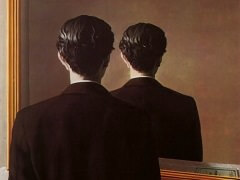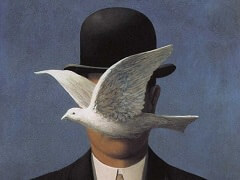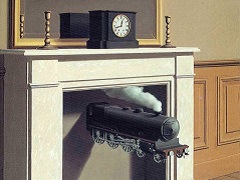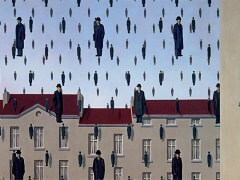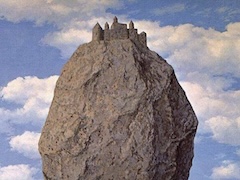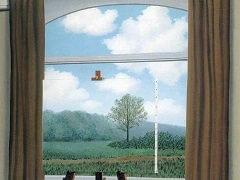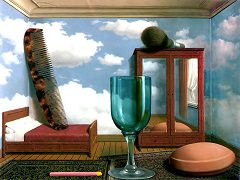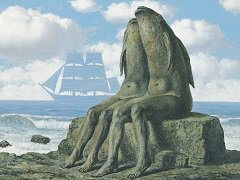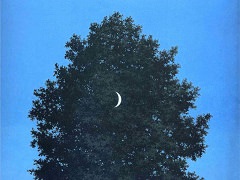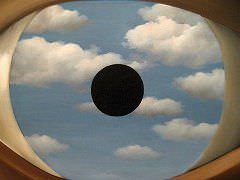Meditation, 1937 by Rene Magritte

The sky, the sea, and the beach together form a normal view of the coast, yet they differ from nineteenth-century marine painting - by Eugene Delacroix, Gustave Courbet, or Daubigny, for instance - since in the almost midnight blue of the sea and the unnatural color of the beach particularly, Magritte has not kept to the appearance of things. His originality appears in the lower section of the work, where three lighted candles, which are also the heads of worms, curl their way across the beach. Recollections of dripping candles probably led him to discover their affinity especially with worms, as well as with reptiles, snails, wormlike eruptions in the sand, glowworms, and phosphorescent light on the water. The conjunction of reptile and candle so that they form a single organism is as unexpected and strange as it is simple.
One should not seek an interpretation in line with the limited logic of observed reality. Analogy is the operative factor; Andre Breton repeatedly invoked it as essential to poetry. In doing so, he quoted the poet and essayist Pierre Reverdy, who attached the utmost importance to the correlation of two realities with no ostensible connections between them, when it came to instilling force into the poetic image. To this Breton himself added the indispensability of the analogous image, which no doubt is the source of Magritte's imagery. The painting reveals the operation of the mechanism in the brain, which, guided by a capacity to discover relationships, succeeds in establishing relationships between images that are unconnected in nature.

